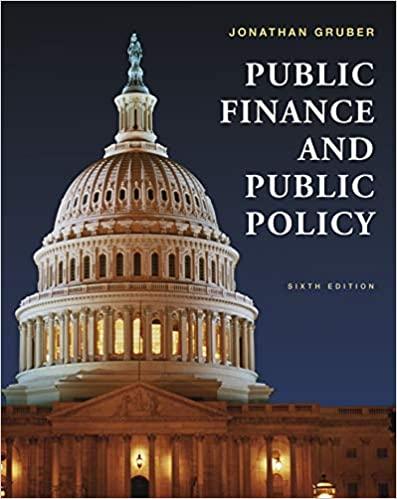Answered step by step
Verified Expert Solution
Question
1 Approved Answer
Walter Brown is looking to open a new French fries store located in the neighborhood where he resides. He has been thinking about this project
Walter Brown is looking to open a new French fries store located in the neighborhood where he resides. He has been thinking about this project for a while. He has completed the technical, legal, and economic feasibility studies in order to decide properly. The economic study presented him with the following financial forecasts:
The project will last years.
The price of an average package of fries should be $ per unit. Under the current conditions, it is not expected that the price will change over the life of the project.
The store is expected to sell units the first year, with an annual growth of in the units sold.
The main variable costs are prefry potatoes, canola oil, mayo, mustard, ketchup, fries containers, napkins and plastic silverware. The economic study has also found that the variable costs should be of the sales revenues.
The main fixed costs are rent $year utilities $year and gross salaries for two parttime employees $year In summary, it is expected that the fixed costs will be $ per year. It is not expected that those fixed costs will change considerably over the life of the project.
The initial investment has to finance the purchase of the frying equipment, the fridge, the freezer, furniture for customers tables and chairs the cash register, and some longterm kitchen tools. It is expected that the capital expenditures should cost $
The project has to purchase its first batch of inventory prefry potatoes, fries containers, napkins, etc. in order to begin selling French fries as soon as the business starts to operate. At the moment of the inventory purchase t the French fries store has not generated any income, because it is not in operation yet, but still it has to pay to its providers in the shortterm. The required initial investment in inventory change net operating working capital is expected to be $ and it will be fully financed with cash.
The IRS has stated that the refrigerator and freezer and other longterm assets should be depreciated linearly in years, that is each year.
The corporate income tax rate is of profits.
The residual inventory at the year of closing the project should be sold at the same price of its purchase. Therefore, it does not generate taxable capital gains.
The salvage value of the capital expenditures at the closing year is $ That is the market price at which the business can expect to receive for selling the fryer, refrigerator, the freezer and the furniture, at the moment of closing the project.
The weighted average cost of capital WACC is Compute the expected value of NPV the standard deviation of NPV and the coefficient of variation of NPV
If you assume a risk adjustment over the cost of capital do you still approve the project? Explain.
Step by Step Solution
There are 3 Steps involved in it
Step: 1

Get Instant Access to Expert-Tailored Solutions
See step-by-step solutions with expert insights and AI powered tools for academic success
Step: 2

Step: 3

Ace Your Homework with AI
Get the answers you need in no time with our AI-driven, step-by-step assistance
Get Started


